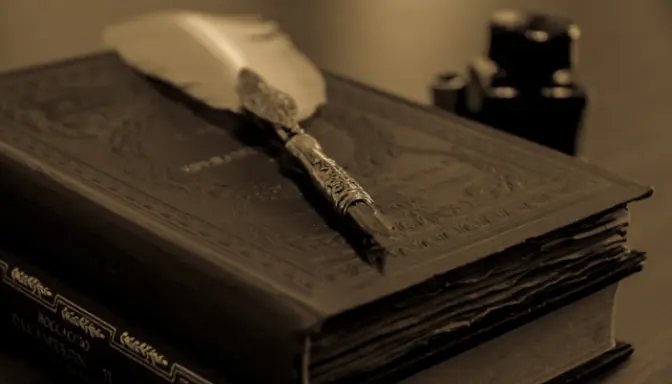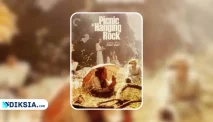Diksia.com - Writing a novel is a challenging and rewarding endeavor. It requires creativity, discipline, and passion. But how do you write a novel that stands out from the rest? How do you craft a story that captivates your readers and makes them want more?
One way to improve your novel writing skills is to study novel examples. Novel examples are novels that have been published and praised by critics and readers alike. They are novels that have achieved success in terms of sales, awards, or influence. They are novels that you can learn from and emulate.
In this article, we will explore some novel examples and how they can inspire you to write a novel that stands out. We will look at novel examples from different genres, styles, and eras. We will analyze what makes them unique and effective. We will also provide some tips and exercises to help you apply what you learn from novel examples to your own novel writing.
Novel Examples from Different Genres
One of the first things to consider when writing a novel is the genre. The genre is the category or type of literature that your novel belongs to. It defines the expectations and conventions of your novel, such as the setting, the plot, the characters, the tone, and the themes.
There are many genres to choose from, such as fantasy, science fiction, romance, mystery, thriller, horror, historical fiction, and more. Each genre has its own rules and tropes, but also its own possibilities and variations. You can follow the genre conventions or subvert them, or even mix and match different genres to create something new.
Here are some novel examples from different genres and what you can learn from them:
Fantasy: The Lord of the Rings by J.R.R. Tolkien
The Lord of the Rings is one of the most famous and influential fantasy novels of all time. It is set in a fictional world called Middle-earth, where various races of beings, such as elves, dwarves, hobbits, and orcs, coexist. The novel follows the quest of a group of heroes to destroy the One Ring, a powerful and evil artifact that can corrupt anyone who wears it.
What makes The Lord of the Rings a novel example is its rich and detailed world-building. Tolkien created a complex and coherent history, geography, culture, language, and mythology for his world. He also created a diverse and memorable cast of characters, each with their own personality, motivation, and arc. He also crafted a compelling and epic plot, full of adventure, danger, and suspense.
Some tips and exercises to learn from The Lord of the Rings are:
- Create a map of your fantasy world and label the important places and features.
- Write a timeline of the major events and conflicts that shaped your world’s history.
- Invent a language or a dialect for your fantasy races or cultures.
- Write a character profile for each of your main and secondary characters, including their physical appearance, background, personality, goals, and flaws.
- Outline the main plot points and subplots of your novel, and how they relate to the characters and the world.
Science Fiction: The Hitchhiker’s Guide to the Galaxy by Douglas Adams
The Hitchhiker’s Guide to the Galaxy is a humorous and satirical science fiction novel that follows the adventures of Arthur Dent, a hapless human who escapes the destruction of Earth by hitching a ride on a spaceship. Along the way, he encounters various aliens, planets, and phenomena, as well as the eponymous guide, a book that contains everything you need to know about the galaxy.
What makes The Hitchhiker’s Guide to the Galaxy a novel example is its witty and original style. Adams uses absurdity, irony, and parody to poke fun at various aspects of science, philosophy, religion, politics, and culture. He also uses clever and creative language, such as neologisms, metaphors, and similes, to describe his imaginative and bizarre scenarios. He also mixes science fiction with other genres, such as comedy, adventure, and romance, to create a unique and entertaining story.
Some tips and exercises to learn from The Hitchhiker’s Guide to the Galaxy are:
- Think of a common or mundane situation and twist it into something absurd or ridiculous.
- Write a parody or a satire of a genre, a trope, or a topic that you find amusing or annoying.
- Invent a new word or a phrase and explain its meaning and usage.
- Write a description of an alien, a planet, or a phenomenon using vivid and humorous language.
- Write a dialogue between two characters who have different perspectives or opinions on something.
Romance: Pride and Prejudice by Jane Austen
Pride and Prejudice is one of the most popular and beloved romance novels of all time. It is set in the late 18th century England, where social class and reputation are important. The novel follows the relationship between Elizabeth Bennet, a spirited and intelligent young woman, and Mr. Darcy, a wealthy and proud gentleman, who initially dislike each other but gradually fall in love.
What makes Pride and Prejudice a novel example is its realistic and nuanced portrayal of human emotions and relationships. Austen explores the themes of love, marriage, family, society, and morality through her characters and their interactions. She also uses irony, humor, and wit to comment on the manners and customs of her time. She also creates a captivating and satisfying plot, full of twists, turns, and surprises.
Some tips and exercises to learn from Pride and Prejudice are:
- Write a character profile for your romantic leads, including their physical appearance, personality, background, values, and preferences.
- Write a scene where your characters meet for the first time and form their first impressions of each other.
- Write a scene where your characters have a conflict or a misunderstanding that creates tension or drama in their relationship.
- Write a scene where your characters have a moment of intimacy or connection that deepens their feelings for each other.
- Write a scene where your characters overcome an obstacle or a challenge that tests their relationship.
Novel Examples from Different Styles
Another thing to consider when writing a novel is the style. The style is the way you express your ideas and emotions through your words. It includes the choice of words, sentences, paragraphs, tone, voice, and point of view. It also includes the use of literary devices, such as imagery, symbolism, metaphor, alliteration, and more.
There are many styles to choose from, such as descriptive, narrative, persuasive, expository, and more. Each style has its own purpose and effect, but also its own challenges and limitations. You can adopt a single style or combine different styles to create something unique and original.
Here are some novel examples from different styles and what you can learn from them:
Descriptive: The Great Gatsby by F. Scott Fitzgerald
The Great Gatsby is a classic novel that depicts the decadence and corruption of the American dream in the 1920s. It is narrated by Nick Carraway, a young man who moves to New York and becomes fascinated by his mysterious and wealthy neighbor, Jay Gatsby, who throws lavish parties and pursues a married woman, Daisy Buchanan.
What makes The Great Gatsby a novel example is its descriptive and lyrical style. Fitzgerald uses rich and vivid language to create a vivid and colorful picture of the characters, the setting, and the mood. He also uses imagery, symbolism, and metaphor to convey the themes and messages of his novel, such as the contrast between appearance and reality, the illusion of the past, and the emptiness of the materialism.
Some tips and exercises to learn from The Great Gatsby are:
- Write a description of a place or a scene using sensory details, such as sight, sound, smell, taste, and touch.
- Write a description of a character using physical traits, clothing, accessories, gestures, and expressions.
- Write a description of a mood or an emotion using figurative language, such as simile, metaphor, personification, and hyperbole.
- Write a description of a theme or a message using imagery, symbolism, and allegory.
- Write a description of a style or a tone using word choice, sentence structure, and punctuation.
Narrative: The Catcher in the Rye by J.D. Salinger
The Catcher in the Rye is a controversial and influential novel that follows the journey of Holden Caulfield, a rebellious and cynical teenager who runs away from his boarding school and wanders around New York City. Along the way, he encounters various people and situations that reveal his alienation, confusion, and disillusionment with the world.
What makes The Catcher in the Rye a novel example is its narrative and conversational style. Salinger uses a first-person point of view and a stream-of-consciousness technique to create a realistic and authentic voice for his protagonist. He also uses colloquial and informal language, such as slang, swear words, and contractions, to reflect his character’s personality, attitude, and age. He also uses humor, irony, and sarcasm to express his character’s opinions and feelings.
Some tips and exercises to learn from The Catcher in the Rye are:
- Write a narrative from a first-person point of view and use a stream-of-consciousness technique to reveal your character’s thoughts and feelings.
- Write a narrative using colloquial and informal language that suits your character’s personality, attitude, and age.
- Write a narrative using humor, irony, and sarcasm to show your character’s opinions.
Persuasive: Animal Farm by George Orwell
Animal Farm is a political and allegorical novel that criticizes the totalitarian regime of Stalinist Russia. It is set in a farm where the animals rebel against their human oppressor and establish their own society based on equality and freedom. However, the pigs, who assume the leadership role, gradually betray the ideals of the revolution and oppress the other animals.
What makes Animal Farm a novel example is its persuasive and rhetorical style. Orwell uses a fable-like and simple language to convey his message and argument. He also uses irony, satire, and symbolism to expose and ridicule the corruption and hypocrisy of the pigs. He also uses repetition, slogans, and propaganda to show how the pigs manipulate and brainwash the other animals.
Some tips and exercises to learn from Animal Farm are:
- Write a persuasive essay or a speech on a topic that you feel strongly about and want to convince others to agree with you.
- Write a persuasive essay or a speech using irony, satire, and symbolism to mock and criticize the opposing view or the status quo.
- Write a persuasive essay or a speech using repetition, slogans, and propaganda to reinforce and influence your audience’s opinion and behavior.
- Write a persuasive essay or a speech using fable-like and simple language to make your message and argument clear and accessible.
Expository: The Da Vinci Code by Dan Brown
The Da Vinci Code is a thriller and mystery novel that revolves around the search for the Holy Grail and the secrets of Christianity. It is based on the premise that Jesus Christ and Mary Magdalene were married and had a bloodline that was hidden and protected by a secret society. The novel follows the clues and puzzles left by a murdered curator, who was a member of the society, and the attempts of a religious fanatic to stop the protagonists from uncovering the truth.
What makes The Da Vinci Code a novel example is its expository and informative style. Brown uses a lot of facts, details, and explanations to support his plot and intrigue his readers. He also uses historical, artistic, and religious references and sources to create a sense of authenticity and credibility. He also uses suspense, action, and twists to keep his readers engaged and curious.
Some tips and exercises to learn from The Da Vinci Code are:
- Write an expository essay or a report on a topic that you find interesting and want to share with others.
- Write an expository essay or a report using facts, details, and explanations to support your main idea and subtopics.
- Write an expository essay or a report using historical, artistic, or religious references and sources to add depth and credibility to your information.
- Write an expository essay or a report using suspense, action, and twists to make your information more appealing and exciting.
Novel Examples from Different Eras
Another thing to consider when writing a novel is the era. The era is the time period and the context in which your novel is set. It influences the setting, the characters, the plot, the themes, and the style of your novel. It also affects the expectations and preferences of your readers.
There are many eras to choose from, such as the ancient, the medieval, the renaissance, the modern, the postmodern, and more. Each era has its own characteristics and challenges, but also its own opportunities and variations. You can follow the era conventions or challenge them, or even create your own era to suit your novel.
Here are some novel examples from different eras and what you can learn from them:
Ancient: The Odyssey by Homer
The Odyssey is one of the oldest and most influential novels in Western literature. It is an epic poem that tells the story of Odysseus, a Greek hero who tries to return home after the Trojan War. Along the way, he faces various obstacles and dangers, such as monsters, gods, and temptations, as well as the suitors who try to woo his wife, Penelope, who waits faithfully for him.
What makes The Odyssey a novel example is its ancient and mythical style. Homer uses a poetic and oral language to narrate his story. He also uses epic conventions, such as the invocation of the muse, the in medias res technique, the epithets, the similes, and the catalogues. He also uses mythological and supernatural elements, such as the gods, the monsters, the prophecies, and the magic, to create a fantastical and heroic story.
Some tips and exercises to learn from The Odyssey are:
- Write a novel in verse or in prose that mimics the poetic and oral language of Homer.
- Write a novel using epic conventions, such as the invocation of the muse, the in medias res technique, the epithets, the similes, and the catalogues.
- Write a novel using mythological and supernatural elements, such as the gods, the monsters, the prophecies, and the magic, to create a fantastical and heroic story.
Medieval: The Canterbury Tales by Geoffrey Chaucer
The Canterbury Tales is a collection of stories that are told by a group of pilgrims who travel from London to Canterbury to visit the shrine of Saint Thomas Becket. The stories range from humorous to tragic, from romantic to moral, from realistic to fantastic. They reflect the diverse and complex society and culture of the medieval England.
What makes The Canterbury Tales a novel example is its medieval and social style. Chaucer uses a vernacular and colloquial language to tell his stories. He also uses a frame narrative technique, where the stories are embedded within the larger story of the pilgrimage. He also uses a variety of genres, such as the fabliau, the romance, the allegory, and the sermon, to suit the different characters and themes. He also uses satire, irony, and humor to comment on the vices and virtues of his time.
Some tips and exercises to learn from The Canterbury Tales are:
- Write a novel in vernacular and colloquial language that reflects the dialect and the idiom of your characters.
- Write a novel using a frame narrative technique, where the stories are embedded within the larger story of a journey or a gathering.
- Write a novel using a variety of genres, such as the fabliau, the romance, the allegory, and the sermon, to suit the different characters and themes.
- Write a novel using satire, irony, and humor to comment on the vices and virtues of your time.
Modern: Ulysses by James Joyce
Ulysses is a groundbreaking and experimental novel that depicts the events and thoughts of a single day in the life of Leopold Bloom, a Jewish advertising agent, and Stephen Dedalus, a young artist, in Dublin, Ireland. The novel parallels the structure and the themes of The Odyssey, but in a modern and realistic setting. The novel also explores various aspects of the human condition, such as identity, sexuality, religion, art, and politics.
What makes Ulysses a novel example is its modern and innovative style. Joyce uses a complex and varied language to express his ideas and emotions. He also uses various techniques, such as the stream-of-consciousness, the interior monologue, the parody, and the allusion, to create a rich and diverse narrative. He also uses different styles, such as the drama, the newspaper, the catechism, and the soliloquy, to reflect the different episodes and moods of his novel.
Some tips and exercises to learn from Ulysses are:
- Write a novel in a complex and varied language that reflects your ideas and emotions.
- Write a novel using various techniques, such as the stream-of-consciousness, the interior monologue, the parody, and the allusion, to create a rich and diverse narrative.
- Write a novel using different styles, such as the drama, the newspaper, the catechism, and the soliloquy, to reflect the different episodes and moods of your novel.
Conclusion
Novel examples are useful for aspiring writers who want to learn from the best. They can inspire you to write a novel that stands out from the rest. They can also help you improve your novel writing skills and techniques.
In this article, we have explored some novel examples from different genres, styles, and eras. We have also provided some tips and exercises to help you apply what you learn from novel examples to your own novel writing.
We hope that this article has been helpful and informative for you. We encourage you to read more novel examples and to write your own novel. Remember, the best way to learn how to write a novel is to write a novel. Happy writing!






